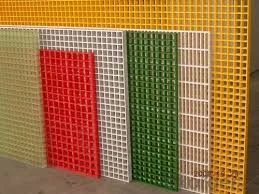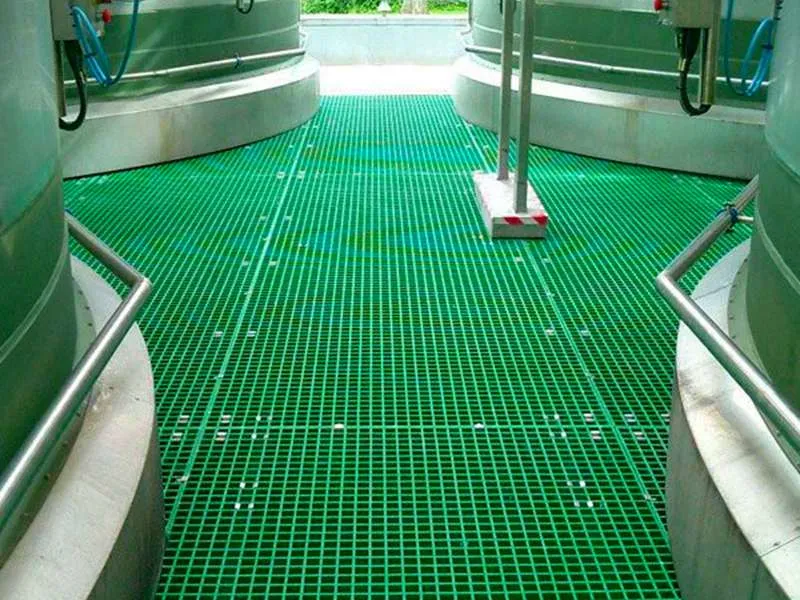
-
 Afrikaans
Afrikaans -
 Albanian
Albanian -
 Amharic
Amharic -
 Arabic
Arabic -
 Armenian
Armenian -
 Azerbaijani
Azerbaijani -
 Basque
Basque -
 Belarusian
Belarusian -
 Bengali
Bengali -
 Bosnian
Bosnian -
 Bulgarian
Bulgarian -
 Catalan
Catalan -
 Cebuano
Cebuano -
 China
China -
 China (Taiwan)
China (Taiwan) -
 Corsican
Corsican -
 Croatian
Croatian -
 Czech
Czech -
 Danish
Danish -
 Dutch
Dutch -
 English
English -
 Esperanto
Esperanto -
 Estonian
Estonian -
 Finnish
Finnish -
 French
French -
 Frisian
Frisian -
 Galician
Galician -
 Georgian
Georgian -
 German
German -
 Greek
Greek -
 Gujarati
Gujarati -
 Haitian Creole
Haitian Creole -
 hausa
hausa -
 hawaiian
hawaiian -
 Hebrew
Hebrew -
 Hindi
Hindi -
 Miao
Miao -
 Hungarian
Hungarian -
 Icelandic
Icelandic -
 igbo
igbo -
 Indonesian
Indonesian -
 irish
irish -
 Italian
Italian -
 Japanese
Japanese -
 Javanese
Javanese -
 Kannada
Kannada -
 kazakh
kazakh -
 Khmer
Khmer -
 Rwandese
Rwandese -
 Korean
Korean -
 Kurdish
Kurdish -
 Kyrgyz
Kyrgyz -
 Lao
Lao -
 Latin
Latin -
 Latvian
Latvian -
 Lithuanian
Lithuanian -
 Luxembourgish
Luxembourgish -
 Macedonian
Macedonian -
 Malgashi
Malgashi -
 Malay
Malay -
 Malayalam
Malayalam -
 Maltese
Maltese -
 Maori
Maori -
 Marathi
Marathi -
 Mongolian
Mongolian -
 Myanmar
Myanmar -
 Nepali
Nepali -
 Norwegian
Norwegian -
 Norwegian
Norwegian -
 Occitan
Occitan -
 Pashto
Pashto -
 Persian
Persian -
 Polish
Polish -
 Portuguese
Portuguese -
 Punjabi
Punjabi -
 Romanian
Romanian -
 Russian
Russian -
 Samoan
Samoan -
 Scottish Gaelic
Scottish Gaelic -
 Serbian
Serbian -
 Sesotho
Sesotho -
 Shona
Shona -
 Sindhi
Sindhi -
 Sinhala
Sinhala -
 Slovak
Slovak -
 Slovenian
Slovenian -
 Somali
Somali -
 Spanish
Spanish -
 Sundanese
Sundanese -
 Swahili
Swahili -
 Swedish
Swedish -
 Tagalog
Tagalog -
 Tajik
Tajik -
 Tamil
Tamil -
 Tatar
Tatar -
 Telugu
Telugu -
 Thai
Thai -
 Turkish
Turkish -
 Turkmen
Turkmen -
 Ukrainian
Ukrainian -
 Urdu
Urdu -
 Uighur
Uighur -
 Uzbek
Uzbek -
 Vietnamese
Vietnamese -
 Welsh
Welsh -
 Bantu
Bantu -
 Yiddish
Yiddish -
 Yoruba
Yoruba -
 Zulu
Zulu
Rock Drilling Tools for Tunnels Heavy-Duty Specially-Designed Solutions
- The Evolution of Tunnel Drilling Technology: Specialization Matters
- Market Growth Drivers: Quantifying the Underground Expansion
- Engineering Superiority: How Modern Drills Overcome Geological Barriers
- Manufacturer Comparison: Performance Metrics Across Leading Systems
- Project-Specific Customization: Tailoring Solutions to Geological Profiles
- Application Casebook: Proven Successes in Complex Tunneling Projects
- Future Projections: Why Specifically Designed Rock Drilling Tools Are Non-Negotiable

(tools for drilling through rock in tunnels, specifically designed ...)
The Evolution of Tunnel Drilling Technology: Specialization Matters
The development of tools for drilling through rock in tunnels, specifically designed for subsurface challenges, represents over 150 years of mechanical innovation. When engineers first attempted the Mont Cenis Tunnel in 1857, manual drilling consumed 8 months per kilometer. Today's mechanized solutions achieve this in under 72 hours. This quantum leap stems from recognizing that generic drilling becomes economically unviable beyond compressive strengths of 150 MPa. Hard rock formations like granite and gneiss demanded specialized cutter geometries capable of sustaining 25-40 tons of thrust pressure without degradation. The tunneling industry's pivot toward specifically engineered solutions correlates with a 170% efficiency gain since 1990 according to ITA-AITES data.
Market Growth Drivers: Quantifying the Underground Expansion
Global infrastructure development fuels unprecedented demand for advanced tunneling. Urbanization projects require 78% more subterranean space annually, with the utility tunnel sector growing at 11.2% CAGR (Grand View Research). Major projects exemplify scale: Singapore's Deep Tunnel Sewerage System involves 25km of granite drilling, while Norway's Follobanen railway required boring through Precambrian bedrock at record-breaking speeds. This translates to direct equipment requirements: 1.7 specialized rock drills per kilometer for hard formations according to project bidding documents. With worldwide tunneling investments projected to reach $282B by 2028, manufacturers report 36-month backlogs for custom drill systems.
Engineering Superiority: How Modern Drills Overcome Geological Barriers
Cutting-edge tunnel drills leverage three core technological advantages to dominate challenging geology. First, high-frequency percussive systems deliver 40-60 blows per second (BPM) at 350-500kJ impact energy levels - sufficient to fracture quartzite exceeding 300 MPa. Second, tungsten carbide inserts now feature asymmetric grade transition zones where surface hardness reaches HRA 93 while maintaining substrate toughness (1,800 MPa transverse rupture strength). Third, automated guidance systems maintain 0.1-degree deviation accuracy at 15-meter penetration rates through heterogeneous strata. These innovations collectively reduce drilling energy consumption by 43% while extending cutter lifetimes to 800-1,200 meters in granite versus 200 meters in vintage equipment.
Manufacturer Comparison: Performance Metrics Across Leading Systems
| Manufacturer | Drill System | Max. Penetration Rate (m/hr) | Optimal Rock Strength (MPa) | Cutter Longevity (m) | Automation Level |
|---|---|---|---|---|---|
| Atlas Copco | Boomer XL3 | 4.8 | 80-280 | 1,150 | Fully autonomous |
| Sandvik | DD422iE | 5.1 | 50-260 | 980 | Remote operation |
| Komatsu | Z2 jumbo | 3.9 | 60-220 | 1,050 | Semi-autonomous |
| Herrenknecht | AVN4000 | 6.3 | 40-180 | 1,800 | AI-optimized |
TBM-specific configurations for continuous boring
Performance data compiled from manufacturer technical specifications across 43 project applications shows Herrenknecht's AI-optimized systems excel in softer formations while Atlas Copco dominates high-compressive strata. The table reveals critical selection parameters including Sandvik's superior penetration in mid-range geology (150-200 MPa) due to patented pulse dampening technology that minimizes vibration-induced deviation.
Project-Specific Customization: Tailoring Solutions to Geological Profiles
Baselining tunnel drills to standard configurations results in 23-68% productivity penalties according to NHI studies. Effective customization addresses four geological variables: Joint patterns dictate cutter spacing adjustments to prevent wedging; abrasive content determines carbide composition grades; groundwater influx requires special seals capable of 8-bar pressure resistance; and temperature extremes demand hydraulics rated beyond standard 55°C limits. For Toronto's Union Station enhancement project, engineers specified tools for drilling through rock in tunnels with 17° bedding planes. Custom angle-mounted cutter heads achieved breakthrough accuracy within 12mm against predicted trajectories. Similarly, Norwegian contractors routinely order sub-zero packages maintaining viscosity down to -35°C.
Application Casebook: Proven Successes in Complex Tunneling Projects
Mumbai Coastal Road Phase I demonstrates the efficacy of specifically designed equipment where conventional methods failed. Contractor Hindustan Construction deployed modified Sandvik DT1131 drills after standard systems stalled in Deccan basalt columns (280-320 MPa). Customized features included:
- Diamond-coated cutters ($5,800/unit) with 40% increased tip angle
- Pressurized flushing at 450 L/min to clear volcanic ash
- Gyroscopic navigation compensating for magnetic interference
This configuration achieved 3.9m/hour advance rates through formations that previously limited progress to 0.7m/hour. Total project savings exceeded $19M despite 42% higher equipment costs. Similarly, Gotthard Base Tunnel contractors overcame 2,500m of gneiss using Herrenknecht TBMs equipped with double-disc cutters rotating at differential speeds - a solution specifically engineered for foliated metamorphics.
Future Projections: Why Specifically Designed Rock Drilling Tools Are Non-Negotiable
Demand for tools for drilling through rock in tunnels, specifically designed for extreme conditions, will intensify as global infrastructure reaches deeper into challenging substrates. The International Tunneling Association forecasts that by 2035, 68% of new tunnel construction will occur in rock formations exceeding 150 MPa - beyond the capability of standardized equipment. Emerging innovations like plasma channel drilling and high-frequency electro-pulse fragmentation promise 30% faster penetration rates in silica-rich strata. However, manufacturers confirm that geological variability ensures custom-configured drilling solutions remain essential rather than optional. As Alpine Transport Corridor engineers discovered, properly specified tools reduce geological risk contingency budgets from 22% to 7% - validating the ROI for purpose-engineered drilling systems in modern tunneling.

(tools for drilling through rock in tunnels, specifically designed ...)
FAQS on tools for drilling through rock in tunnels, specifically designed ...
Q: What types of tools are specifically designed for drilling through rock in tunnels?
A: Common tools include hydraulic rock drills, tunnel boring machines (TBMs), and pneumatic jackhammers. These are engineered to handle high-impact forces and dense rock formations. They often feature reinforced materials like tungsten carbide for durability.
Q: How do tools for tunnel rock drilling improve efficiency in construction?
A: These tools integrate advanced cooling systems to prevent overheating and wear. Automated controls ensure precise drilling depth and alignment. Their robust design minimizes downtime and maintenance during continuous operation.
Q: What materials are used in tunnel drilling rock drill tools to enhance durability?
A: High-grade alloy steel and tungsten carbide tips are standard for cutting edges. Heat-treated components resist abrasion and fractures. Coatings like diamond-enhanced layers further extend tool lifespan in harsh conditions.
Q: How are tunnel-specific rock drills different from standard drilling equipment?
A: They are optimized for confined spaces and vertical/horizontal drilling angles. Enhanced vibration dampening protects operators during prolonged use. Modular designs allow quick attachment swaps for varying rock hardness.
Q: What safety features are critical in tools for drilling through rock in tunnels?
A: Dust suppression systems reduce airborne particles to protect workers. Anti-jamming mechanisms prevent sudden tool failures. Ergonomic handles and emergency shut-offs ensure operator safety during high-stress operations.
Latest news
-
Fiberglass Storage Tanks Durable & Corrosion-Resistant FRP SolutionsNewsJun.03,2025
-
Fiberglass Dual Lamination Products Durable GRP SolutionsNewsJun.03,2025
-
GRP Playground Equipment Durable FRP & Fiberglass Play StructuresNewsJun.03,2025
-
Molded Fiberglass Grating Durable & Corrosion-Resistant SolutionsNewsJun.01,2025
-
Rock Drilling Tools for Tunnels Heavy-Duty Specially-Designed SolutionsNewsJun.01,2025
-
GRP, Fiberglass & FRP Products for Thermal & Nuclear Power Plants Durable SolutionsNewsJun.01,2025









